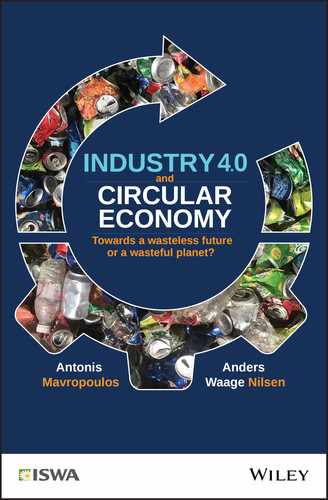How the marriage of Industry 4.0 and the Circular Economy can radically transform waste management—and our world Do we really have to make a choice between a wasteless and nonproductive world or a wasteful and ultimately self-destructive one? Futurist and world-renowned waste management scientist Antonis Mavropoulos and sustainable business developer and digital strategist Anders Nilsen respond with a ringing and optimistic “No!” They explore the Earth-changing potential of a happy (and wasteless) marriage between Industry 4.0 and a Circular Economy that could—with properly reshaped waste management practices—deliver transformative environmental, health, and societal benefits. This book is about the possibility of a brand-new world and the challenges to achieve it. The fourth industrial revolution has given us innovations including robotics, artificial intelligence, 3D-printing, and biotech. By using these technologies to advance the Circular Economy—where industry produces more durable materials and runs on its own byproducts—the waste management industry will become a central element of a more sustainable world and can ensure its own, but well beyond business as usual, future. Mavropoulos and Nilsen look at how this can be achieved—a wasteless world will require more waste management—and examine obstacles and opportunities such as demographics, urbanization, global warming, and the environmental strain caused by the rise of the global middle class. · Explore the new prevention, reduction, and elimination methods transforming waste management · Comprehend and capitalize on the business implications for the sector · Understand the theory via practical examples and case studies · Appreciate the social benefits of the new approach Waste-management has always been vital for the protection of health and the environment. Now it can become a crucial role model in showing how Industry 4.0 and the Circular Economy can converge to ensure flourishing, sustainable—and much brighter—future.
Table of Contents
- Cover
- Foreword by Ad Lansink
- Foreword by Dimitris Kaliampakos
- Foreword by Erik Solheim
- Series Preface
- Preface
- About the Authors
- About the Graphic Designer
- Endorsements
- Glossary
- Acronyms
- Chapter 1: The End of Business as Usual
- Chapter 2: Understanding Industry 4.0
- Chapter 3: Un(mis)understanding Circular Economy
- 3.1 A GLOBAL TREND
- 3.2 CIRCULAR ECONOMY COMES FROM OUR PAST
- 3.3 WHAT IS A CIRCULAR ECONOMY?
- 3.4 FROM GOOD INTENTIONS TO SCIENCE
- 3.5 CIRCULARITY IS NOT SUSTAINABILITY
- 3.6 THE BUTTERFLY EFFECT
- 3.7 THE END OF GROWTH AS WE KNOW IT
- 3.8 CIRCULAR ECONOMY FOR WHOM?
- 3.9 IT'S HUGE, SYSTEMIC, UNCERTAIN BUT URGENTLY NEEDED
- REFERENCES
- Chapter 4: Redefining Resources andWaste
- Chapter 5: Waste Management 4.0
- Chapter 6: Towards the Digitalization of the Waste Industry
- Chapter 7: The Rise of a NewScience
- Chapter 8: Stairway to Heavenor Highway to Hell?
- 8.1 CIRCULAR ECONOMY OR SPACE RACE?
- 8.2 CIRCULAR ECONOMY AND IND4.0 AS ESSENTIALLY CONTESTED CONCEPTS
- 8.3 SQUEEZING IND4.0 – UNDERMINING CIRCULAR ECONOMY
- 8.4 GOVERNANCE IS THE KEY – CITIES ARE THE LOCK
- 8.5 BEYOND BUSINESS AS USUAL OPTIMIZATION
- 8.6 ENVIRONMENTAL INCREMENTALISM? NO, THANKS
- 8.7 IND4.0 MEETS THE HORSE MANURE CRISIS
- 8.8 NO SANITATION = NO SUSTAINABILITY
- 8.9 ASK SISYPHUS THE TRILLION‐DOLLAR QUESTION
- REFERENCES
- Epilogue: The Future Starts with You
- Epilogue: Towards Irreversible Wastelands
- Index
- End User License Agreement
